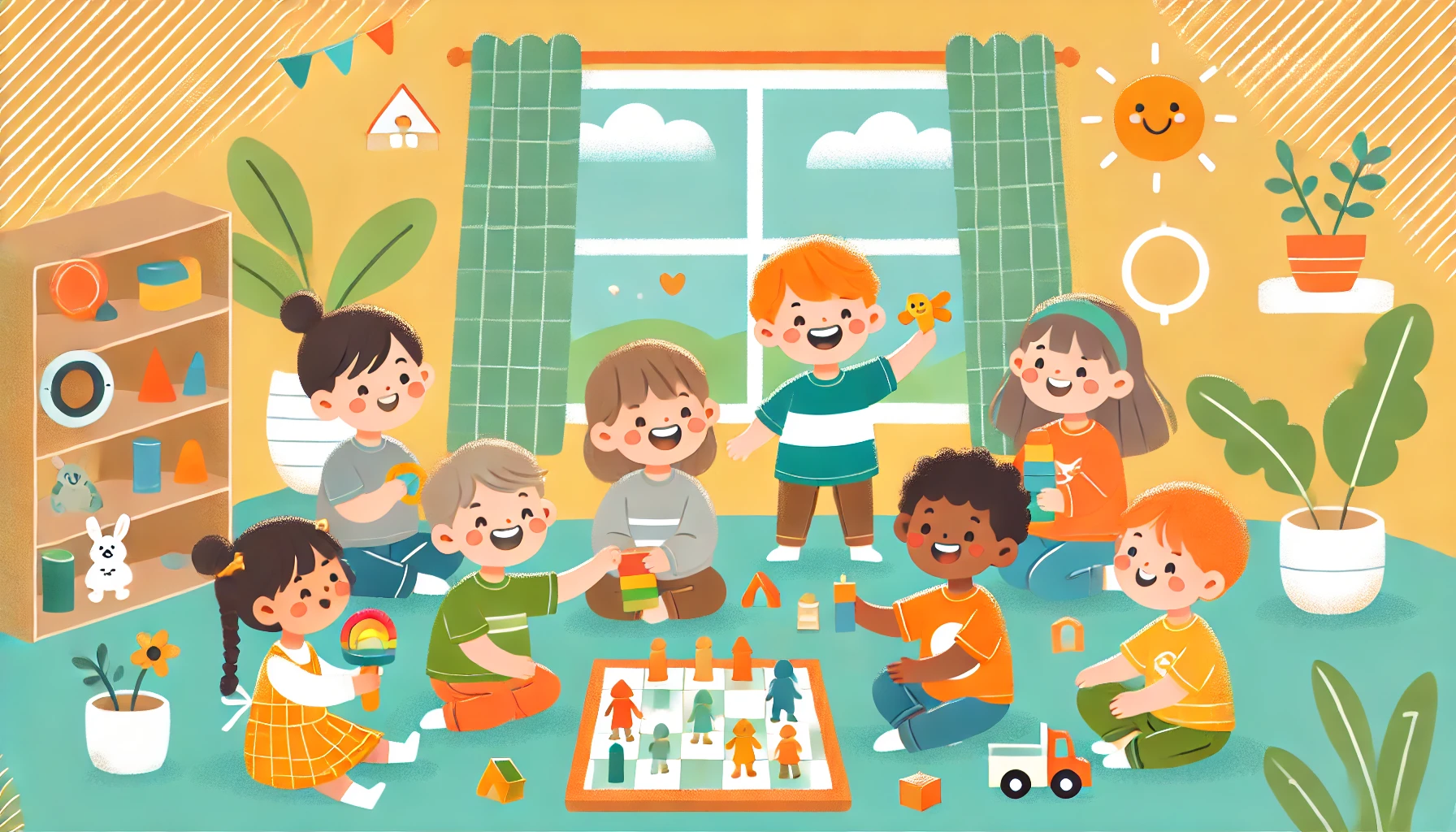How to Teach Young Children About Being a Good Friend
Friendship is an important part of childhood that helps children develop social skills, empathy, and emotional intelligence. Teaching young children how to be kind, share, and communicate effectively with their friends sets the foundation for positive relationships. Parents can encourage friendship-building skills through play, role-modeling, and guided interactions. In this article, we’ll explore practical ways to help children understand and practice being a good friend.
Why Teaching Friendship Skills is Important
- Encourages kindness and empathy – Helps children understand and care about others’ feelings.
- Builds social confidence – Gives kids the tools to make and keep friends.
- Teaches conflict resolution – Helps children handle disagreements in a positive way.
- Promotes cooperation and teamwork – Encourages children to work well with others.
- Strengthens emotional intelligence – Helps kids recognize and respond to different social situations.
1. Model Good Friendship Behavior
Children learn about friendship by observing how adults interact with others.
Activity Idea:
- Show kindness and respect in your own friendships: “I’m helping my friend because that’s what friends do.”
- Demonstrate active listening by paying attention when someone speaks.
- Use friendly greetings and say “thank you” and “I appreciate you” often.
What Kids Learn:
- That friendships are built on kindness and respect
- How to be a good listener and communicator
- The importance of showing appreciation for friends
2. Teach Sharing and Taking Turns
Sharing helps children learn patience, generosity, and cooperation.
Activity Idea:
- Play sharing games with toys, blocks, or art supplies.
- Use a timer to take turns with a favorite toy.
- Praise good sharing behavior: “That was really nice of you to share with your friend!”
What Kids Learn:
- That sharing makes playtime more fun
- How to take turns without frustration
- The joy of giving and being generous
3. Encourage Empathy and Understanding
Helping children recognize and care about their friends’ feelings strengthens their social bonds.
Activity Idea:
- Ask, “How do you think your friend felt when you helped them?”
- Read books like How Full Is Your Bucket? to discuss how actions affect others.
- Role-play different emotions and discuss ways to respond with kindness.
What Kids Learn:
- How to recognize and understand emotions in others
- The importance of comforting and supporting friends
- That small actions can make a big difference in friendships
4. Teach Conflict Resolution Skills
Disagreements happen in friendships, and teaching kids how to handle them positively is essential.
Activity Idea:
- Role-play situations like two friends wanting the same toy and discuss fair solutions.
- Teach simple problem-solving phrases like “Let’s find a way to share” or “I didn’t like that, but let’s fix it.”
- Encourage using calm voices and taking deep breaths when upset.
What Kids Learn:
- How to solve problems without arguing
- The importance of compromise in friendships
- That staying calm helps resolve conflicts faster
5. Practice Saying Kind Words
Using kind words helps children create positive and supportive friendships.
Activity Idea:
- Create a “kind words jar” where kids draw a kind phrase to say to a friend each day.
- Teach them compliments like “I like playing with you!” or “That was a great idea!”
- Play a “friendship circle” where everyone says one nice thing about each other.
What Kids Learn:
- How positive words strengthen friendships
- The importance of building others up instead of tearing them down
- That kind words make people feel happy and valued
6. Encourage Cooperative Play
Playing together helps children practice teamwork and respect.
Activity Idea:
- Play team games like building a puzzle together or creating a group art project.
- Encourage pretend play where kids take different roles and work together.
- Use phrases like “Let’s work as a team!” to highlight cooperation.
What Kids Learn:
- How to collaborate and share ideas
- The importance of working together
- That teamwork leads to fun and success
7. Teach the Value of Apologizing and Forgiving
Saying “I’m sorry” and forgiving mistakes are key friendship skills.
Activity Idea:
- Teach kids to say “I’m sorry for…” and explain their mistake.
- Role-play how to accept an apology with “That’s okay, let’s play again.”
- Read books about forgiveness and discuss why it’s important.
What Kids Learn:
- How to take responsibility for mistakes
- The importance of forgiving and moving forward
- That friendships grow stronger through understanding
8. Reinforce and Praise Positive Friendship Behaviors
Encouraging children when they show kindness and teamwork helps them continue being good friends.
Activity Idea:
- Say, “I saw how you helped your friend when they were sad. That was very kind of you!”
- Create a “friendship tree” where kids add a leaf each time they do something friendly.
- Ask, “How did it feel to be a good friend today?” to encourage self-reflection.
What Kids Learn:
- That being a good friend is appreciated and valued
- How positive actions make friendships stronger
- The joy of making others feel happy and included
Final Thoughts
Teaching young children about being a good friend helps them build strong, lasting relationships based on kindness, empathy, and cooperation. By modeling positive friendship behaviors, encouraging teamwork, and reinforcing kindness, parents can guide children in developing social skills that will benefit them throughout life.
